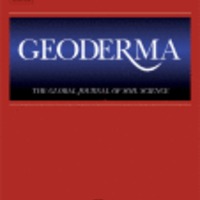Sorption Temperature and the Stability of Iron-Bound Soil Organic Matter
Item
Title
Sorption Temperature and the Stability of Iron-Bound Soil Organic Matter
List of Authors
M. L. Nguyen; J. L. Goldfarb; A. F. Plante; B.L.T. Lau; W.C. Hockaday
Abstract
Iron oxide surfaces can preserve soil organic matter (SOM) through the formation of mineral–organic associations (MOAs). Warming climates can affect SOM dynamics through altering the formation and stability of MOAs. We conducted batch sorption experiments from 15 to 35 °C using hematite and soil humic and fulvic acids to assess the stability of MOAs formed at each temperature using laboratory incubations and thermal analysis. Isotopic depletion was consistent with selective sorption of lignin- and lipid-derived carbon from humic acid, but fractionation was independent of temperature. Microbial incubations of the MOAs over 45 days showed that the mineralizable carbon (Co) was 0.639 ± 0.064% for humic acid and 1.46 ± 0.13% for fulvic acid, suggesting that the former may be more biologically stable than the latter. Thermogravimetric analyses (TGA) indicated that humic acid-MOAs were also more thermally stable (TGA-T50 ~285 °C) and less exergonic upon decomposition than fulvic acid-MOAs (~270 °C). Sorption temperature did not affect any of the biological (Co, k) or thermal (TGA-T50, ΔE) indices. These findings suggest that sorption temperature may not affect the formation or the stability of iron oxide MOAs. In warming climates, iron oxides might continue to act as a carbon sink in soils and sediments globally.
Date
2019
Publication Title
Geoderma
Publisher
Elsevier
Identifier
DOI 10.1016/j.geoderma.2019.01.040
Bibliographic Citation
Nguyen, M. L., Goldfarb, J. L., Plante, A. F., Lau, B. L. T., & Hockaday, W. C. (2019). Sorption temperature and the stability of iron-bound soil organic matter. Geoderma, 341, 93–99.
